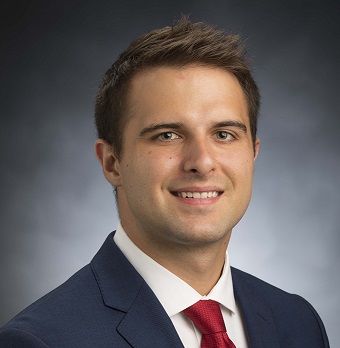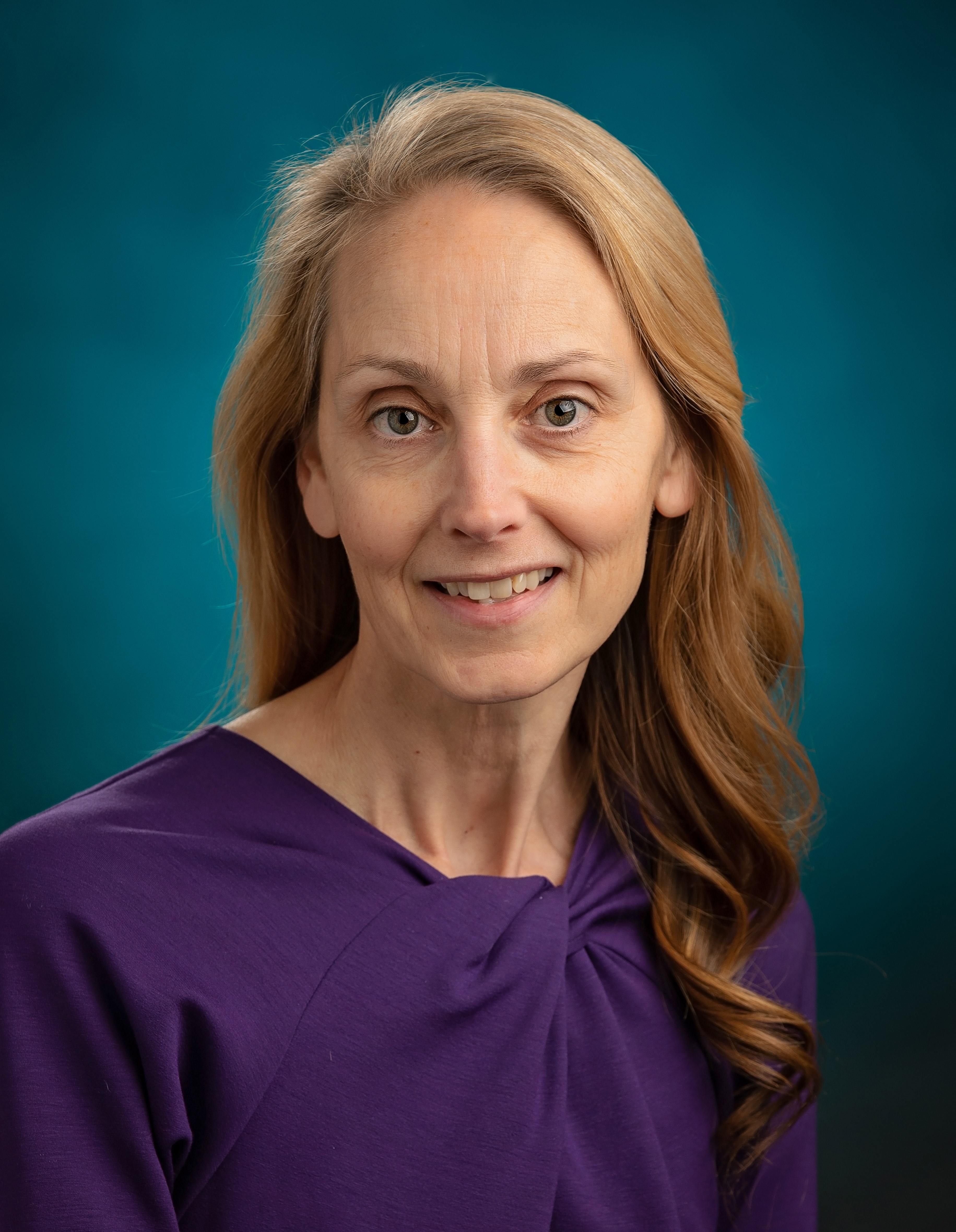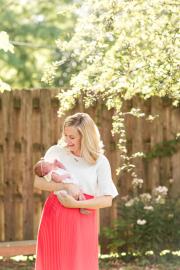Voices of Population Science and Policy
Rural and Urban America: Two sides of the same coin

In late 2019, our team was working on a document called “A Path to Improve Rural Health: A Series of Policy Recommendations to Improve the Health of Illinois and America’s Rural improve health in rural Illinois." Now, rural areas of Illinois and the U.S. face very difficult challenges in health and health care delivery.
This brief was the culmination of months of research and analysis stemming from the Illinois Rural Health Summit in August 2018. This event allowed us to meet with stakeholders in different sectors from government, health care, public health, philanthropy and academia to share their perspectives on the state of rural health in Illinois.
Like many people over the last year and a half, we were forced to change plans due to the COVID-19 pandemic. PSP's Health System Science division understood the importance of re-examining the topics from the Rural Health Summit in order to recognize just how devastating the pandemic has been for rural Illinois. Case (11,971 per 100k) and death rates (224.02 per 100k) for rural counties in Illinois were considerably higher than urban counties (10,757.7 and 175.5). Food insecurity rates increased more sharply in rural Illinois. Vaccination rates are lagging in rural areas, due in part to access but also a because of a clear breakdown along political lines.
The pandemic also ushered in massive changes to the health and economic systems of the country. It amplified the need to embrace innovation like telehealth and remote patient monitoring. These options are particularly helpful for rural residents that do not have reliable transportation or they have health issues that make it difficult to make appointments. Federal and state governments have invested a considerable amount of funding into rental assistance, early childhood education and healthcare delivery models. The stimulus checks and enhanced unemployment allowed many Americans to put money into savings for the first time and begin paying down credit card debt or student loans.
As we continue work on our COVID-19 Rural Health Summit briefs, we understand that the greatest public health challenge of our lives has given us an opportunity to make the real, systematic changes that are needed to improve the health and wellness of rural Illinois.
The Connection Prescription
by Tracie Johnson, MA, Assistant Instructor

It’s common to have a prescription for medication… but what about a prescription to connect with others? Healthcare providers at SIU Medicine and the community health workers who provide follow-up care often inquire about a patient’s connectedness to others. In addition, the Education Team and faculty at Population Science and Policy involved in medical education at the school are intentional in encouraging medical students to consider the importance of social determinants of health as they open cases and see patients. Writing a prescription for connection is not a foreign concept.
Due to the pandemic, feelings of disconnectedness were experienced by many who would otherwise not be feeling isolated or alone. Prolonged times of social distancing and working remotely significantly altered interactions with co-workers, friends, and even extended families. Although there is light at the end of the tunnel, many are experiencing exhaustion, discouragement and disconnect. If this is you, may I write you a connection prescription?
As more and more people are fully vaccinated and you are able to connect in person, be mindful to reach out and reestablish human connections. Reaching out to others fosters relationships and strengthen ties which work to increase feelings of connectedness. Schedule a small gathering of friends in a setting where all feel comfortable interacting. Coordinate an outdoor party or a day of activities at a local park or walking trail. Spending time with others and sharing life in person are great ways to fight feelings of isolation. Each can immediately improve mood, contribute to positive feelings of self-worth, and provide interactions needed to foster good mental health.
The correlation is uncontested- social connection significantly impacts and improves health outcomes. Not only is this true for SIU Medicine patients, it also applies to friends and partners of PSP throughout our service region and beyond. If you take time to connect to others, you simultaneously invest in your own well-being. For your own health and the health of those around you, reach out and re-connect with someone today. It’s what the doctor ordered.
The Realities of Rural Life
by Stacy Grundy, DrPH, Research Assistant Professor

When you look at me, you may not expect me to have grown up in a rural community but I am a proud product of Hodges Park, Illinois, a small rural community in Alexander County located at the confluence of the Mississippi and Ohio Rivers. The town is 13 miles north of Cairo, Illinois, and proudly boasts that it is the hometown of Southern Illinois University basketball’s all-time leading scorer, Charles “Chico” Vaughn. In fact, the town is so small that the city sign does not list the population. If I had to guess, I would say it is home to around 50 people.
Though the community has always been small, it looks very different from the community that my mom grew up in. Hodges Park, at one time, was a vibrant, bustling community with two grocery stores and family homes near and far. Today, the town is not what it once was. There are no stores and nature has reclaimed the lots where those family homes once stood, a sad fate many rural towns in America meet. For centuries, rural communities have been the backbone of America and serve as crucial sources of energy, water, and food for much of the country. Yet, while the country as a whole experienced a growing economy and the emergence of new industries, rural communities and small towns were faced with declining populations and the loss of their entire economies. The impetus for this change was the decline of the manufacturing industry. From 1997 through 2003, over 1.5 million rural workers lost their jobs due to fundamental changes in industries that have historically been the mainstay of the rural economy – it’s a change that my family experienced firsthand.
In November 2015, the closure of a paper mill in Wickliffe, Kentucky was announced. This mill was a major source of employment for families in Wickliffe and other surrounding rural communities, including Hodges Park. My father worked as a union quality control crew leader for over 40 years. Though he was close to retirement and this event eventually led him to retire, you could still see the uncertainty in his eyes as he talked about the devastating impact the closing would have on his coworkers and their families. That mill transformed the lives of its employees; raising them up from living below the poverty line to now being upper middle class. I would not be the person I am today without the resources that were provided from that mill – resources that allowed rural residents to buy homes, have great health insurance for themselves and their families, and send children to college. There are millions of communities across this country that have been devastated by the loss of manufacturing jobs and the survivors have not recovered.
Today, in the aftermath of a very polarizing election season, many news headlines tended to pit urban communities against their rural counterparts, highlighting the stark divide between resources. But what these stories don’t mention is that rural and urban communities are more similar than they acknowledge. The economic loss faced by rural communities in the 90’s and early 2000s mirror factory closings in Detroit and Chicago and true understanding of rural and urban needs will only come when we revisit the economic development of these communities.
When I was younger, I could not wait to grow up and move far away from my small town, but now that I am older and wiser, I have grown to appreciate the small town that made me who I am today. Hodges Park and the families that reside within have shaped my fundamental understanding of what it means to be rural. I realize that my distinct experience of growing up in a rural community has made me a better researcher, public health practitioner, and neighbor. All of the lessons learned have equipped me with the understanding of the cultural nuances of rural and urban communities, and to not only see the deficits, but also see the plethora of strengths that these communities possess.
A Letter to Other Moms About the COVID-19 Vaccine
by Meredith Volle, MD, Population Science and Policy Education Director

The other day when I was going through a box of clothes, I held up a tiny infant dress. It was a beautiful mint green with a Peter Pan collar and bunny print, clearly intended for my newborn daughter to wear this Easter, but purchased almost a year before she was even born. I racked my brain to try and remember what would have possessed me to buy such an item; surely my older daughter had multiple dresses to hand down that would have worked for this future occasion. I knew I was making some impulse purchases at the beginning of the pandemic, but this seemed excessive. Then a distant, albeit distinct, memory peeked around the corner of my mind: At the time, I thought I might not live to see her first Easter.
I found out I was pregnant late in 2019. When I was about 20 weeks along, the world stopped. Suddenly everyone was using the word “pandemic,” something I spoke about to medical students during Population Science and Policy lectures, not something I was used to hearing about on every news channel, on every website, and in every conversation. My husband and I discussed how to protect our family, including two of our parents who lived alone, and took our oldest daughter out of preschool the day before it closed. It was never a discussion if I would continue to work or not. We both knew this was part of the oath I took as a physician, so I put on a mask, walked up three flights of stairs to avoid the elevator, and went to work each day.
As clinic appointments were reduced to try and avoid unnecessary spread, I began providing increased coverage in the newborn nursery. I can remember going on rounds and seeing the relief on parents’ faces when I came in to examine their babies. It seemed like we were thinking the same thing: At a time when you didn’t know who was following guidelines to stay home, wear masks, and social distance, one of the only “younger” populations who reliably did so were expectant parents. They knew I was protecting them, and I knew they were more likely to be taking steps to protect me and my unborn daughter. We were in it together, figuring out how to safely bring babies into a changed world where siblings and grandparents couldn’t visit and instead welcomed these new arrivals over Facetime.
Each day we would hear the same frightening stories in the news: A pregnant woman with COVID who goes on a ventilator and wakes up to find she gave birth prematurely months ago; A new mom with COVID who finally gets to hold her baby in the NICU; A pregnant mother with COVID dies and leaves behind her loving family. My way of coping was to push through during the day and quiz my husband at night: Do you know who to call if I get sick? Do you know what specialists to ask for in case our daughter was born prematurely? If I die, do you know how to dress them, pick out gifts on special occasions, and tell them how much I loved them? That little dress with the dainty collar I bought was a symbol of my darkest fear as a mother: I could get sick at any time and would not be around to raise my daughters.
It is now six months since my beautiful daughter Mae was born and much of the advice for pregnant and breastfeeding women has not changed in the past year. We are still a high-risk group, there are still few research studies about COVID-19 in our population, and we continue to live with uncertainty for our families every day. One thing, however, is remarkably different. There is now a vaccine to protect against COVID-19.
In my field of Pediatrics, we talk to parents about vaccines every single day. It is not a new topic or an easy one, but I enjoy helping parents who are experiencing vaccine hesitancy and discussing how they can feel confident in vaccinating themselves and their children. I hear from countless women my age who are worried about getting vaccinated because of pregnancy, breastfeeding, or future plans to have children. Moms worry about many of the same things, but in my experience, what we choose to do with those fears is what will determine the outcomes for our families.
I was so proud when I received my first dose of the COVID-19 vaccine last month. After waiting for the required observation period, I went straight home to change clothes, scrub up to my elbows, and breastfeed, knowing that while there is likely almost no chance the mRNA vaccine components can pass to my daughter, in some ways I wish it could because children will not be eligible for the vaccine for several months at least. My older daughter recently asked when she will receive the vaccine herself, and I heard my husband explain that healthcare workers like her mommy get it first so we can keep helping others, and then it will be her turn. Like most children, she isn’t excited about shots, but she understands that it will allow her to go back to school more safely and play with her friends again. Her only request was to specify which one of our amazing SIU Pediatrics clinic nurses gives it to her.
When other mothers in healthcare and the community ask, I am proud to be able to share that I was vaccinated, protecting both myself and my family, and that my infant daughter is still breastfeeding and couldn’t be doing better. For me, my COVID-19 vaccine is a tangible symbol that illustrates how far we have come as a family—that I made it to the next mile marker in a race to protect my daughters and balance my roles as both a mother and practicing healthcare worker in a pandemic.
To the other moms out there who are unsure about the vaccine: I see you and I am happy to go first and share my story if it helps even one fellow mother feel better about getting her own vaccine. Too often we only hear about the bad outcomes, so for once, let us revel in the good! This year I will be celebrating Easter with both my daughters, knowing that I have done everything within my power to protect them. And as for that little dress purchased in a moment of fear? My baby outgrew it months ago.
(photo credit: Jill Gum Photography)
